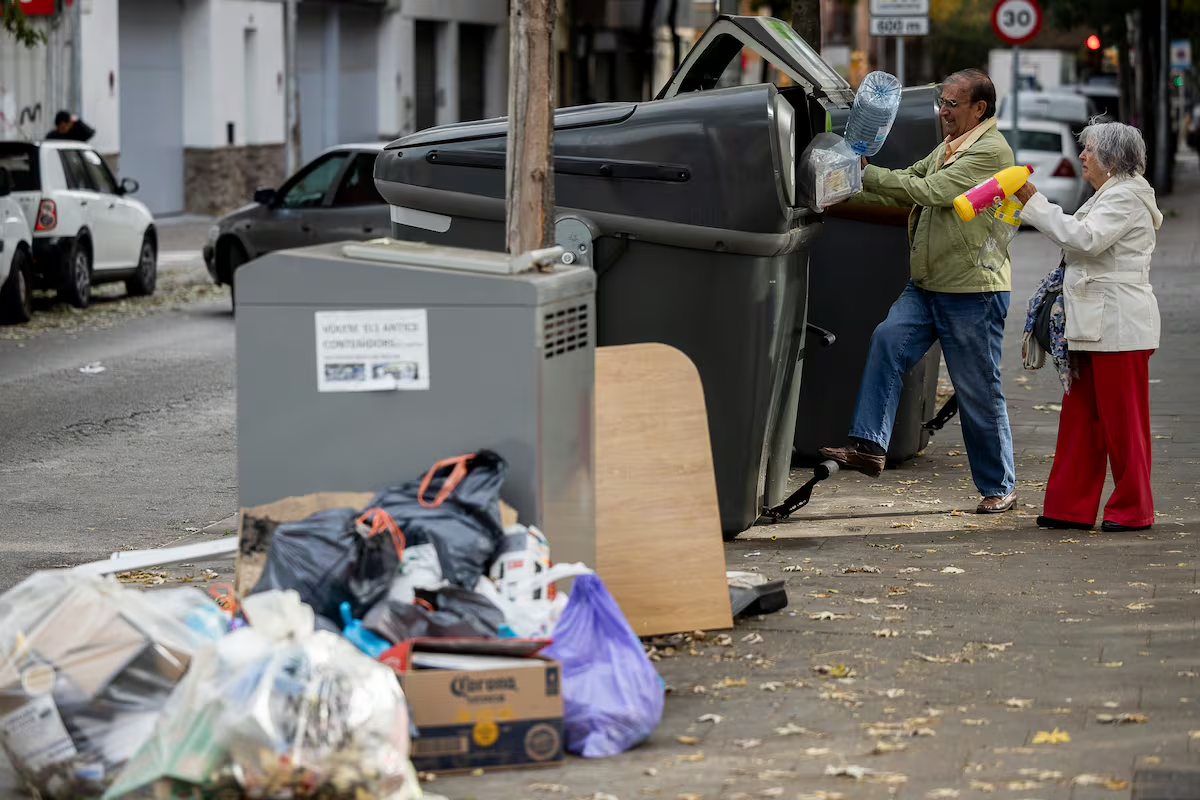
New waste collection and management rates approved by Spanish municipalities this year present an extreme map of inequality that is difficult to justify, with the difference in taxpayer bills reaching 230 euros between some regional capitals and others. The average household bill in the country goes from 287.5 euros a year in Valencia to 56.9 euros in Toledo, a difference that illustrates the chaos the new tax will create. Figures are quoted from below Waste taxation monitoring office The ENT Foundation is the organization that the National Association of Local Finance Inspectors considers to be an authorized voice on this issue.
Inspectors describe this disparity scenario as completely nonsensical and the result of rare, hasty and technically flawed regulations with no clear standards, leaving the task of enacting them to councils. The Spanish government official gazette In 2022, without much indication or guidance, the implementation of garbage rates was delegated to local bodies. One of the few requirements was that there be no shortage of taxes, i.e. to cover 100% of the costs of waste collection and management.
Juan Ignacio Gomar, a member of the association’s expert committee, said the idea is to follow the principle of pay-per-generation, in line with the European Waste Directive, which inspired the fee, which calls for reuse and recycling rates to reach 55% by 2025 and 65% by 2035. While some municipalities have tried to do their homework, others have introduced highly questionably designed fees that are now opening the door to a wave of complaints and possible returns. The obligation to apply this principle and the difficulty of designing a proportionately compliant scheme are the main focus of the dispute. “This is going to be like a capital gain,” he added, referring to a constitutional ruling that declared traditional tax calculations that tax increases in the value of urban land illegal in 2021.
Inspectors believe the new tax rate “creates significant inequalities between taxpayers, as some councils charge very different amounts than others.” He insisted that the European Commission had not forced Spain to set such a new tax, adding that the state’s obligation to cover the full cost through tax rates had led to higher amounts in some municipalities. Places where there were no taxes suddenly had taxes, and places that already had taxes suddenly increased without residents realizing any real changes in waste management.
Carmen López Herrera, a partner at consulting firm Afi, acknowledged that designing the rate is complex. “Europe’s waste directives are very general and difficult to adapt to the realities of Spanish municipalities. For example, they reward certain initiatives, such as producing their own compost, and penalize those who do not recycle. In many Spanish cities, which are densely populated and have high-rise buildings, that is not possible. We do not know what each citizen is throwing away,” he explains. “Furthermore, Spanish law lacks regulations that give local governments options and help them interpret the standards.”
According to calculations by the ENT Foundation, a typical Spanish household (with a land value of 64,295 euros, 2 people of legal age and 964 kilograms of waste produced per year) will pay 116.32 euros in fees in 2025, an increase of 16.2% on the previous year. This increase far exceeds the CPI and is the largest since data has existed.

The foundation also analyzes the average fees paid by businesses based on the number of residents in a town. It concluded that the tax code did not follow uniform criteria in classifying these payments, and found that there was wide variation in the categories depending on criteria such as the type of activity, area and location of the premises, amount of waste and number of workers. In small municipalities, hotels account for the largest share. In big places, I go to the supermarket.
lawsuit
The lawsuits that trash rates are sparking go beyond fearing inspectors. This is confirmed by the growing number of appeals against this tax in different regions, the collection of signatures against it, and the political battles within local councils over the new figures. Just as the criteria used to design taxes vary, so too do the critiques vary in nuance, but they share commonalities. In many cases, the basic tenet of regulation that “the polluter pays” is not respected, leading to comparative dissatisfaction between and within councils.
This was recently reported by the Organization for Consumers and Users (OCU), which called on the European Commission to assess the correct transposition and application of the Waste Directive. The association criticizes that more than 15 state capitals, including Badajoz and Guadalajara, impose fixed tax rates on all taxpayers, but their design does not reflect the actual cost of services or follow the principle of pay-per-generation. There is a similar effect in Madrid, where part of the fee depends on the cadastral value of the house and the rest on the quality of waste generation and recycling in the area.
A similar complaint has been raised by the Federation of Regional Municipalities of Madrid (FRAVM), which considers the tax rate to be “unfair, disproportionate and not very transparent” and encourages taxpayers to challenge the tax rate. He argues that the weight of residential cadastral values in calculations is far greater than recycling rates, and that there are no income standards or penalties built into tourist apartments, which are treated as habitual residences. The Facua Consumers Association has also created a form available to taxpayers to expedite the processing of complaints.
At the same time, courts and local governments themselves are beginning to take action. The High Court of Castilla and León invalidated León’s garbage fee, and the Leganes City Council (Madrid) was the first to declare default. The city council has not applied the tax and is proposing to collect signatures from the central government to remove or abolish the fee.



